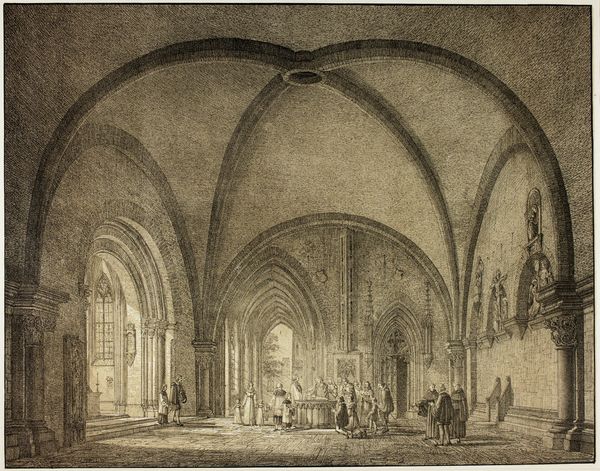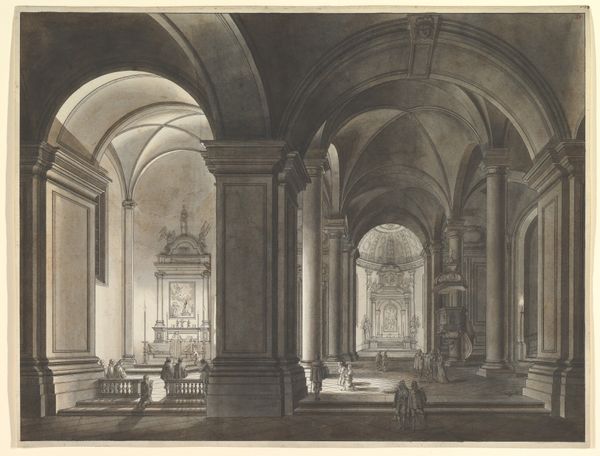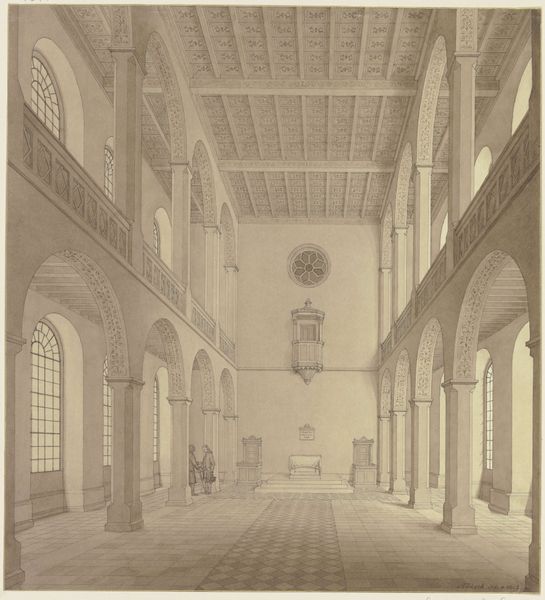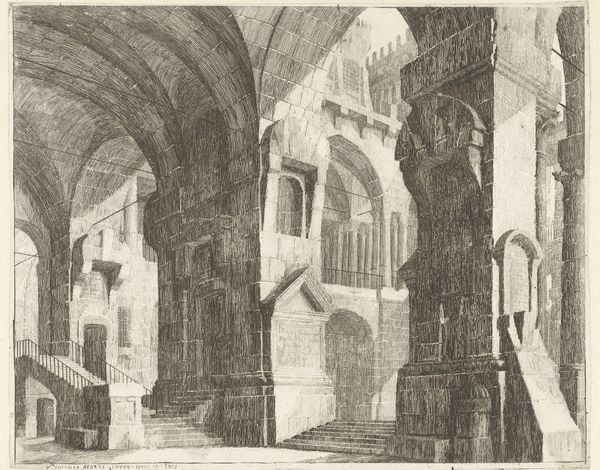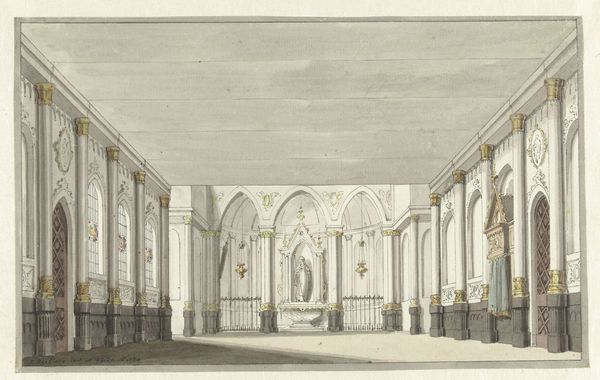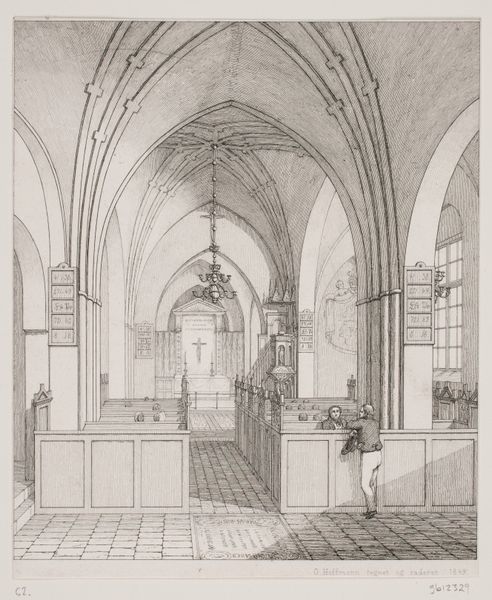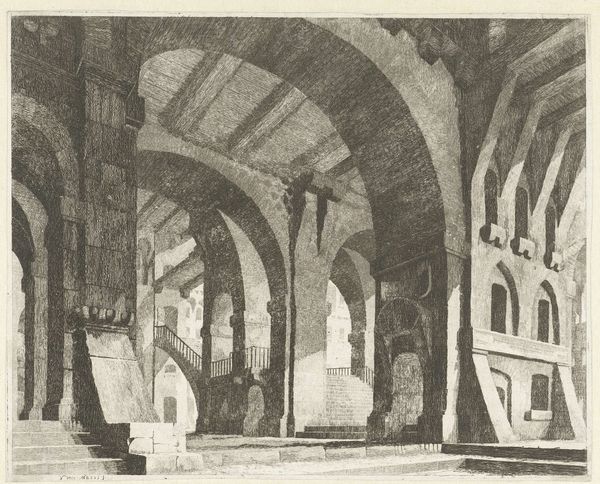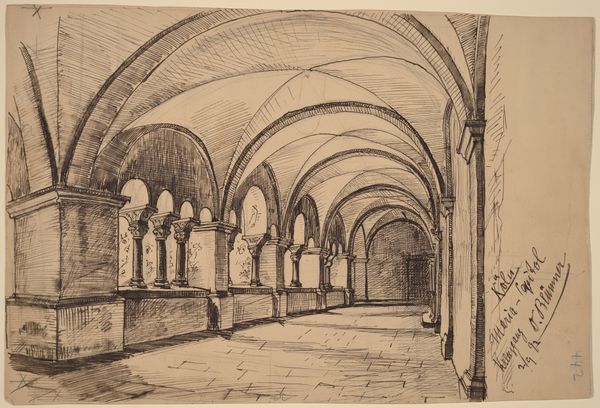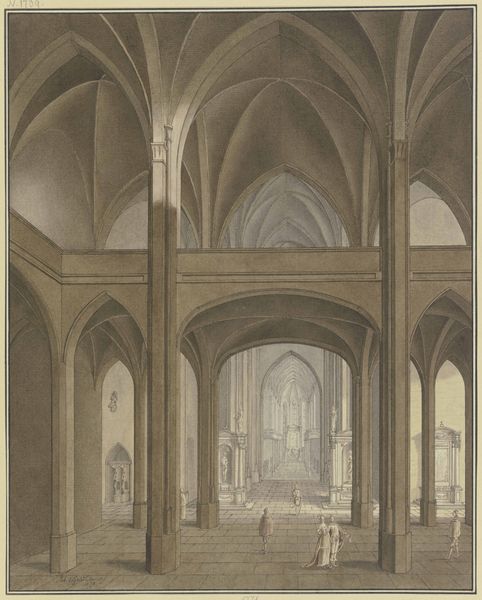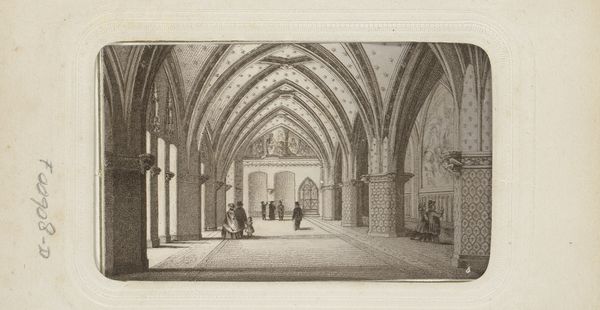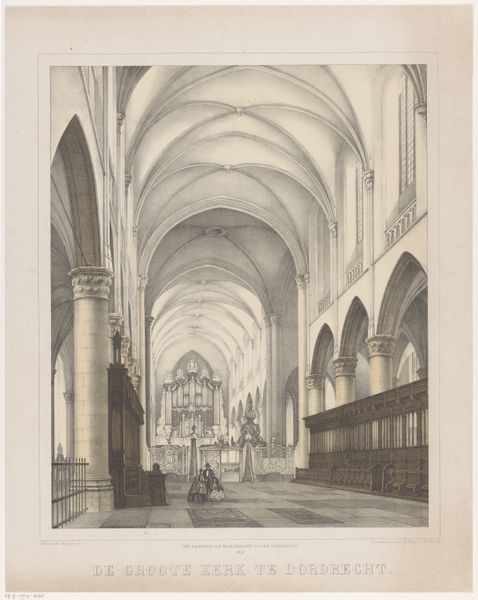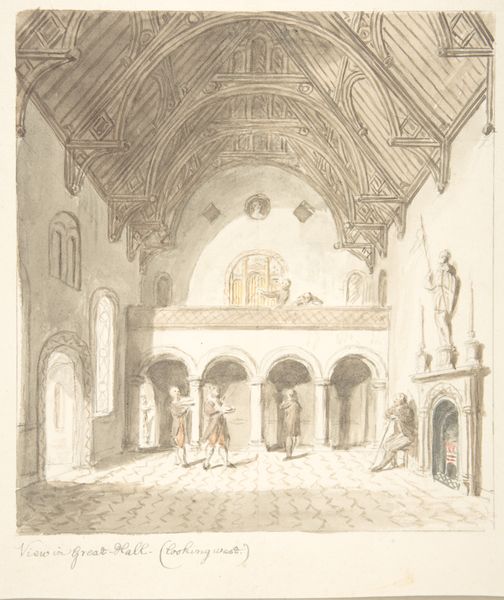
A View in San Lorenzo Fuori le Mura, Rome c. 1820
0:00
0:00
drawing, print, paper, ink, ink-drawings, pen
#
drawing
#
neoclacissism
# print
#
landscape
#
paper
#
ink
#
ink-drawings
#
water
#
pen
#
history-painting
Dimensions: 295 × 388 mm
Copyright: Public Domain
Curator: What a captivating scene! We're looking at a drawing entitled "A View in San Lorenzo Fuori le Mura, Rome," created around 1820 by Gustav Friedrich Hetsch. Editor: Immediately, I’m struck by the hushed reverence evoked. The somber sepia tones lend it the feel of a faded memory, almost dreamlike, despite its architectural precision. Curator: Precisely. Hetsch was working during the rise of Neoclassicism, and this piece perfectly exemplifies the movement’s interest in depicting historical settings, reflecting an admiration for antiquity and the revival of classical forms. He would have studied how grand, historical narratives could be expressed in contemporary artwork, feeding the public appetite for visualizing a monumental past. Editor: Notice the arches—recurring throughout religious art for centuries; they lead the eye and suggest an almost unending path. Here they speak to permanence, don't they? It seems as though even as some portions of the depicted architecture erode, these people find comfort and assurance from what stands as its unchanging essence. Curator: Absolutely, and this basilica held great symbolic significance in early 19th century Rome. It had already experienced multiple renovations across the centuries and stood as a potent symbol of continuity within the Catholic Church despite ever-changing geopolitical winds. By the time Hetsch produced this drawing, Rome and its artistic patronage had undergone fundamental disruptions amid the Napoleonic wars. The public consumption of religious iconography acquired new social and political valences in that volatile context. Editor: Observe how the figures seem absorbed, either in prayer or contemplation; Hetsch is guiding us through his imagery and inviting us to do the same in person. I feel I understand how they view this setting, the emotion the space carries for them and me. Curator: Indeed. And rendered as a drawing and print, a readily reproducible medium, the Basilica is conceptually unshackled from Rome and made available to broader audiences beyond Italy. It provided 19th-century consumers a connection to history. Editor: And what powerful history it portrays! Curator: This offers insight into the dynamic interplay between art, religious spaces, and early 19th-century society. Editor: Definitely something I'll be considering during the rest of my visit to San Lorenzo!
Comments
No comments
Be the first to comment and join the conversation on the ultimate creative platform.
